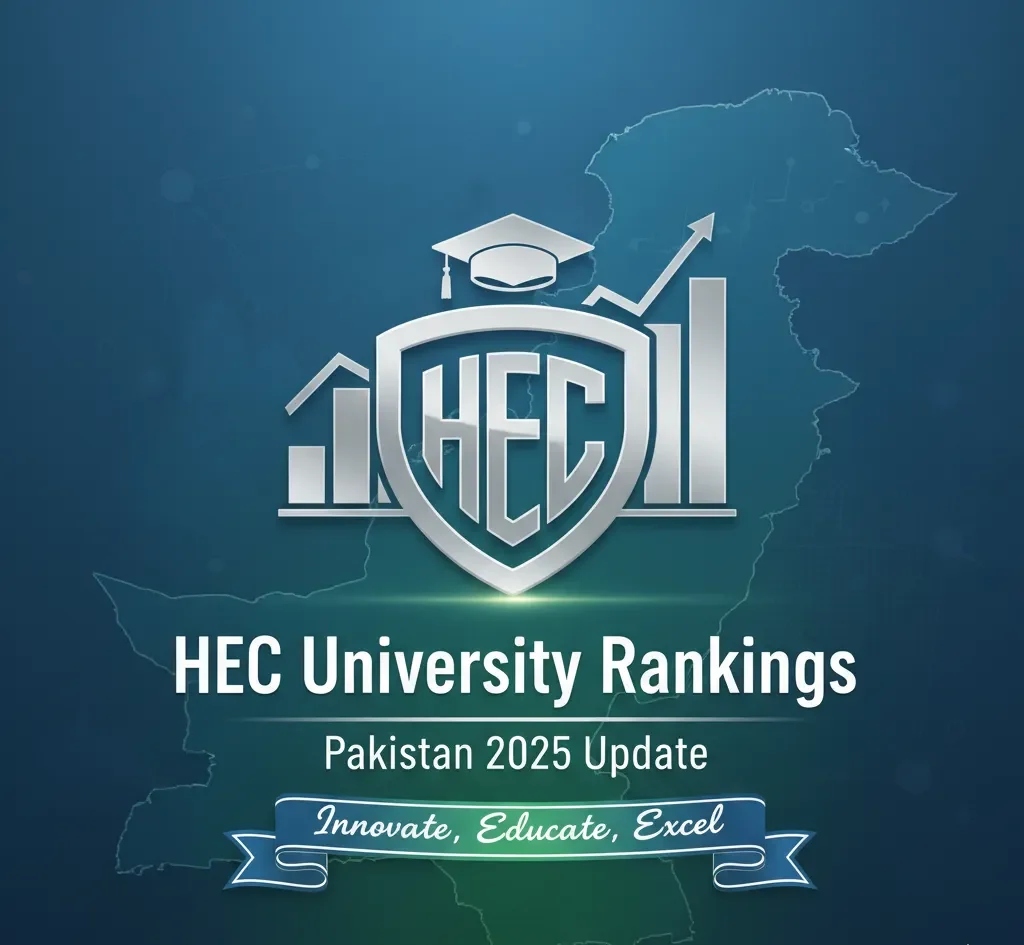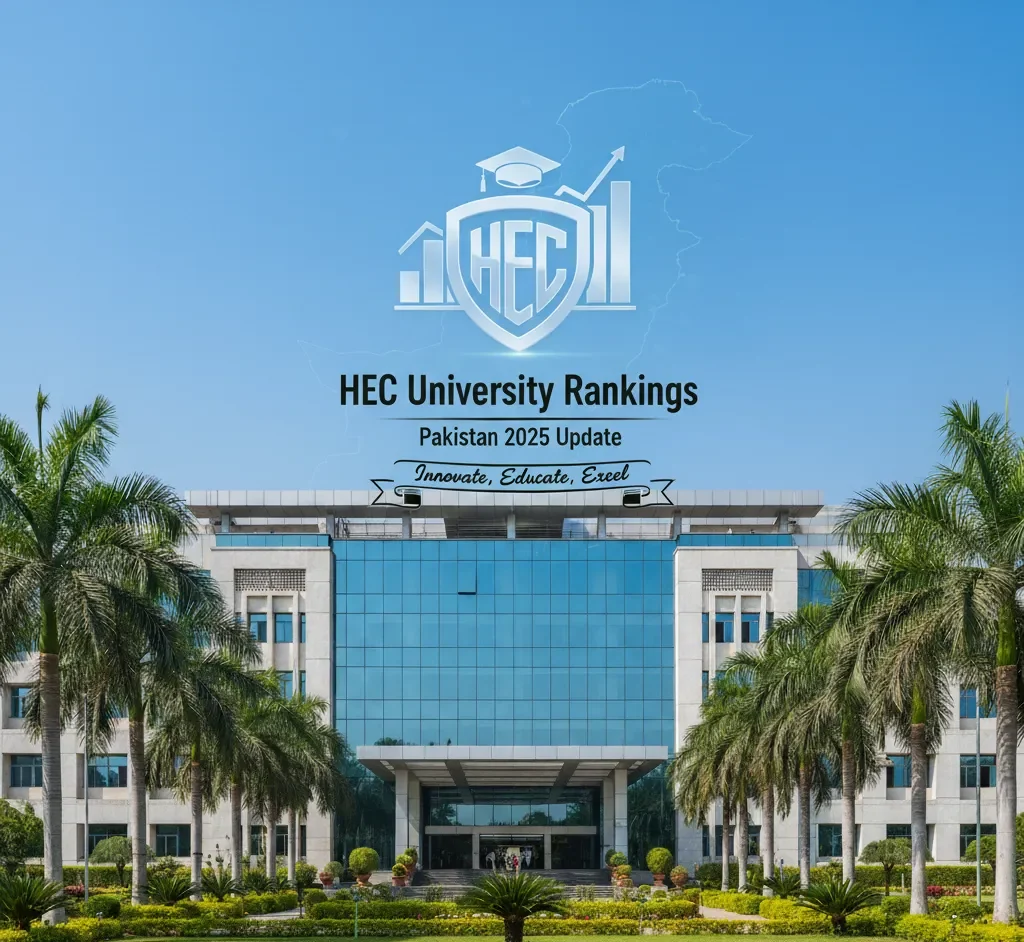Deciding on a university is one of the most significant decisions that students and their families face. In Pakistan, many families use the HEC university rankings as an indicator or signifier of academic quality, research capacity, facilities, and reputation. Here is the challenge: the Higher Education Commission (HEC) has not published a ranking list after 2015. Because of the absence of a new rankings list, the uncertainty for many is real. The following article will explore what we know, where major universities stood from the 2015 ranking list, the impact of not having an update, and what we might anticipate from the 2025 rankings list.
What We Know: 2015 Rankings Snapshot
HEC’s last official university ranking was published in 2015. Pakistan Technology News
The top universities were:
| Rank | University | Key Strengths (as of 2015) |
|---|---|---|
| 1 | Quaid-e-Azam University (QAU), Islamabad | Strong research output, reputable faculty, good infrastructure, wide range of disciplines. |
| 2 | University of the Punjab, Lahore | Long history, large student body, breadth of programs, good recognition across Pakistan. |
| 3 | National University of Sciences & Technology (NUST), Islamabad | Excellence in science, engineering & technology, modern labs, strong faculty credentials. |
Other universities ranked in top tiers included Aga Khan University, COMSATS Institute of Information Technology, University of Agriculture Faisalabad, and others.
The Gap: Where We Are in 2025
- Despite promises and statements from HEC that a new ranking is being prepared, no updated official ranking has been released as of 2025. Higher Education Commission
- HEC’s web pages still show the old 2015 ranking list. Higher Education Commission
- This delay has prompted criticism and concern from students, parents, and education experts. Many want newer data to make informed choices.

Why the Delay Matters
- Decisions Based on Outdated Data
Admission decisions, scholarship allocations, university selection often rely on rankings. If they are 10 years old, they may not reflect current conditions (faculty turnover, infrastructure improvements or deterioration, program quality etc.). - Loss of Incentive for Improvement
Rankings provide pressure for universities to improve. Without current rankings, some institutions may not feel as driven to maintain high standards. - Transparency & Trust Issues
Stakeholders may feel the ranking process lacks transparency, or that HEC is not prioritizing this important metric. - Global Standing & Comparisons
For students considering going abroad, or universities wanting international recognition, current ranking data is helpful.
What We Should Look for in the 2025 Rankings
When HEC finally publishes the 2025 rankings, these are the elements to pay attention to:
- Updated evaluation criteria: teaching quality, research output (publications, citations), employability, international collaborations, faculty qualifications, infrastructure (labs, libraries, digital access), student services.
- Clear methodology: weightings, data sources, timeframes.
- Distinction among disciplines: maybe separate rankings for engineering, medical sciences, humanities etc.
- Transparent data: allow third parties or researchers to verify or at least see major metrics.
A Brief Profile of the Top Universities (as per 2015)
Here’s a closer look at the top three (2015) and what made them stand out then—and how they’ve trended since, insofar as public information allows.
-
Quaid-e-Azam University (QAU), Islamabad
In 2015, QAU was top because of its strong research culture, well-qualified faculty, solid facilities, and balance among sciences, humanities, and social sciences. Though newer universities are catching up, QAU remains highly respected nationally. -
University of the Punjab, Lahore
One of Pakistan’s oldest and largest universities. As of 2015, its strength was breadth: many faculties, large student population, varied degree offerings. Its reputation and familiarity help it remain a benchmark. -
National University of Sciences & Technology (NUST), Islamabad
Known for strong programs in engineering, science, and technology. Modern labs, international linkages, and focus on applied research boosted its standing.
Suggestions for Students & Parents at Present
While awaiting fresh rankings, here are some important steps to prudently interact and assess:
- If you can, visit campuses: observe campus facilities, laboratories, research or other facilities.
- Look at recent research output: faculty publications, student projects, research collaborations or interaction.
- Graduate residents: What types of jobs are graduates getting? How much do employers care about their feedback?
- Program-specific accreditation: e.g. in engineering, medicine, business etc.
- Peer reviews & student feedback: What current and past students say about the quality of teaching, support, facilities.
Conclusion
HEC’s extended delay in releasing updated university rankings presents a significant issue for Pakistan’s higher education ecosystem. The previous rankings are from 2015 and therefore require new data for 2025 that is updated, transparent, and well-defined. The rankings matter to students, parents, and universities for more than just the ranking numbers; they are used for making decisions, enhancing progress, and building trust.
In the meantime, use the 2015 rankings carefully, have a discussion and supplement with recent data and your impressions based on qualitatively collecting your observations, and await HEC’s announcement.



